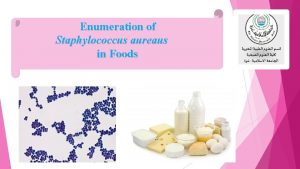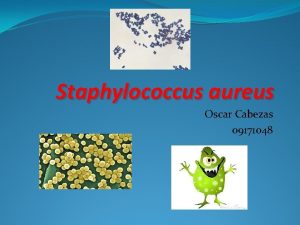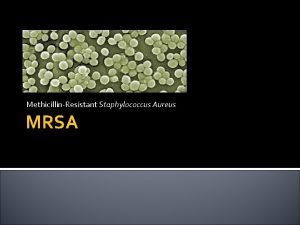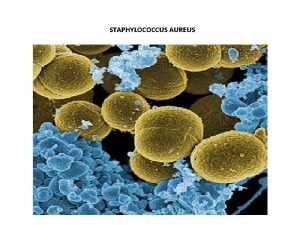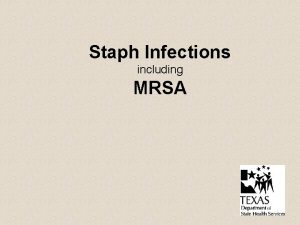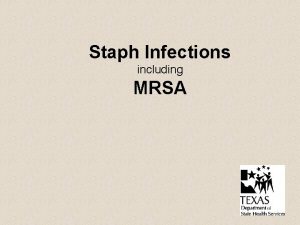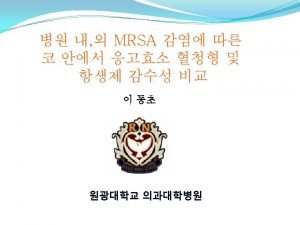Staphylococcus aureus Skin Infections Typical Staph Skin Infections









- Slides: 9

Staphylococcus aureus Skin Infections

Typical Staph Skin Infections

• Staph aureus are bacteria that commonly cause skin infections. • 20 to 30% of healthy people have Staph on their skin. • Staph are resistant to some antibiotics, but all Staph infections can be treated with one or more antibiotics. • Some populations, like athletes, military recruits, children, and prisoners are at higher risk of Staph infections. • The risk of infection is increased when there are cuts in the skin, close skin-to-skin contact, crowded living conditions, poor hygiene, and contaminated items and surfaces.

• Staph infection can be prevented through practicing good hygiene: 1. Keep hands clean by washing with soap and water or using an alcohol-based hand sanitizer. 2. Keep cuts and scrapes clean and covered with a bandage until healed. 3. Avoid contact with other people’s wounds and bandages 4. Avoid sharing personal items such as towels or razors. • Employees and students with Staph infections do not need to be excluded from work or school if their wounds are clean and covered.

S. aureus Colonization • About 30% of people are COLONIZED • Average 2. 8 strains /person • Colonization more frequent in – Newborns – Hemodialysis patients – People with skin diseases like dermatitis, eczema – Diabetics • Colonization may last for months to years

Sites of Colonization • IN and Around the NOSE • WOUNDS • Armpit, groin, genital and perianal area, rectum

Mode of Transmission • From person to person by colonized hands • Rarely from environment • General routine cleaning & disinfection of housekeeping surfaces and patient-care surfaces adequate for inactivation of MRSA • MRSA susceptible to many low-level and intermediate-level disinfectants • One tablespoon of bleach in a gallon of water

Community Outbreaks • • • Competitive sports Correctional facilities School Day care centers Families ++++ +

Prevention of Staph infection: • Promote good hygienic standards – Handwashing, plain soap OK – Showers – Do not pick, press, touch wounds, boils and other skin infections – Avoid sharing personal items like towels and razors




